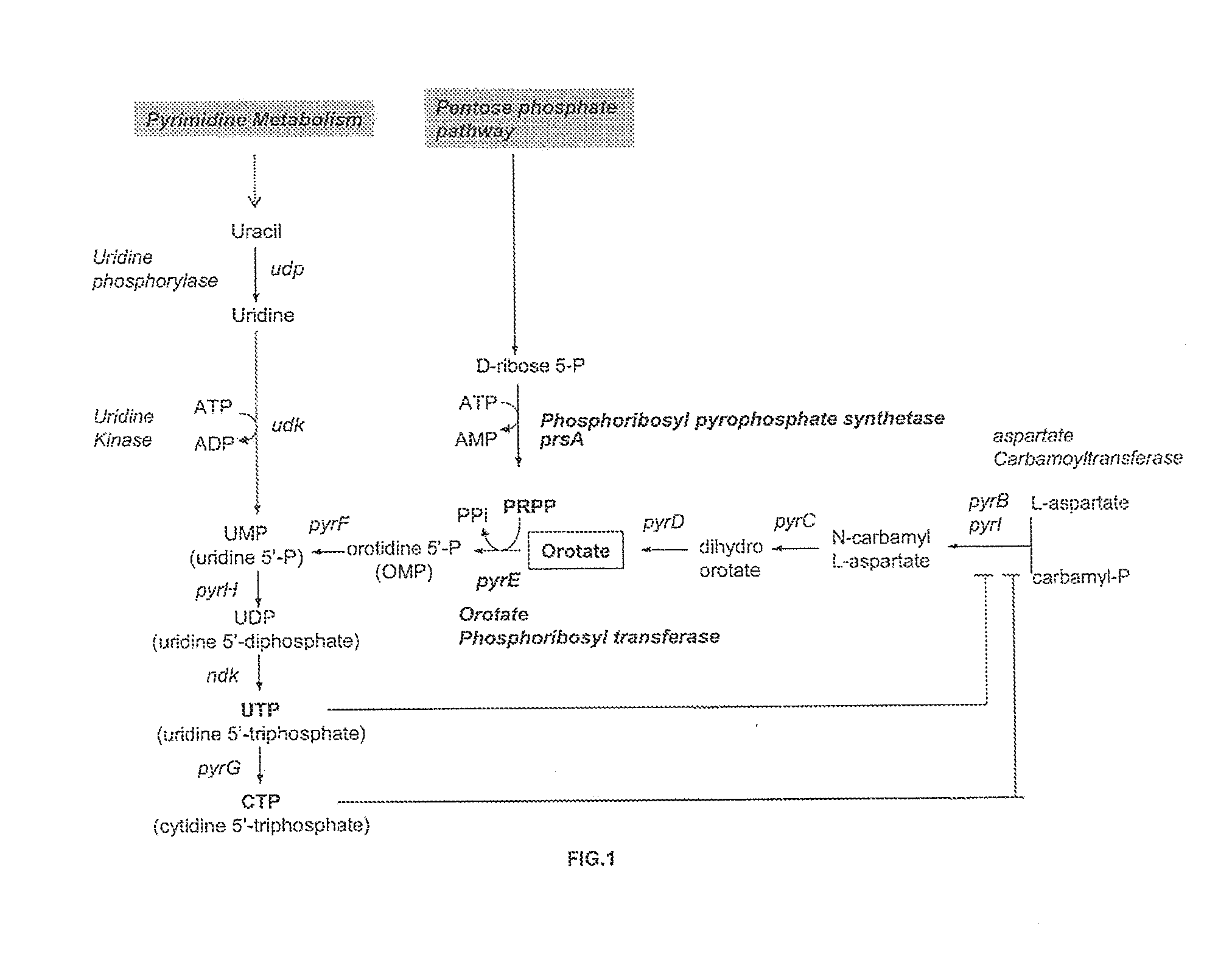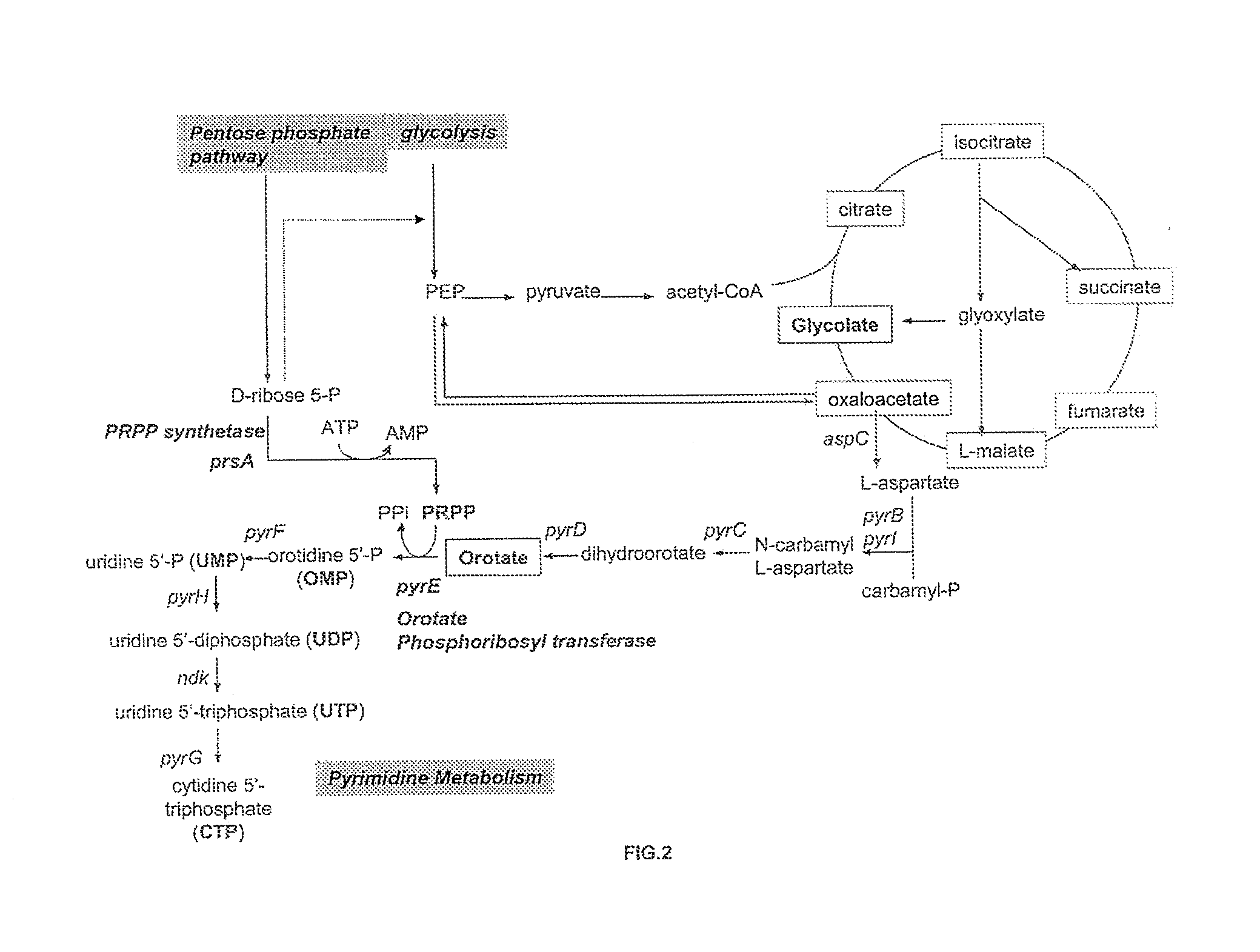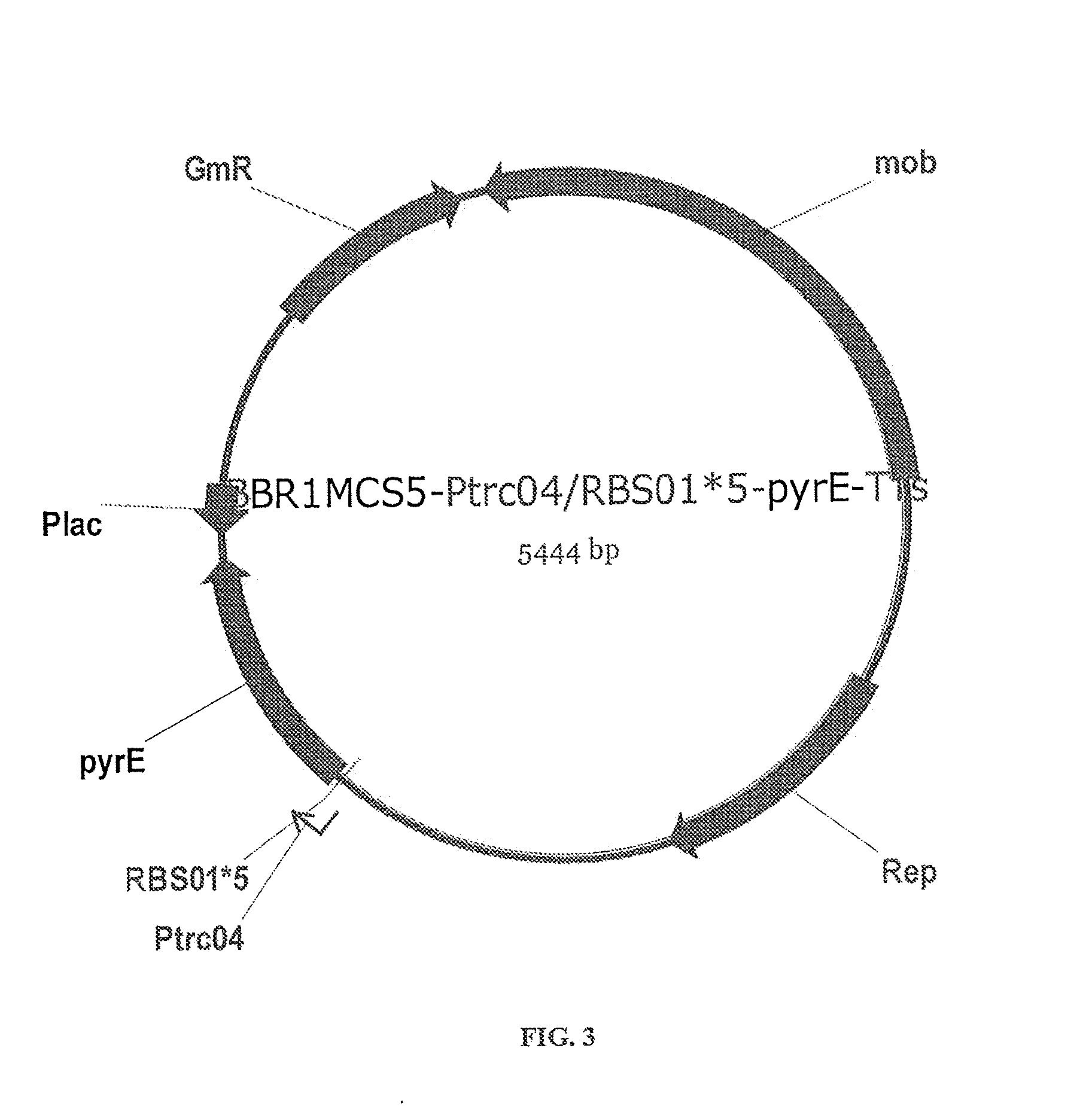Glycolic acid fermentative production with a modified microorganism
a technology of glycolic acid and fermentation, which is applied in the field of glycolic acid fermentative production with a modified microorganism, can solve the problems of increasing the purification cost and undesirable orotate, and achieve the effects of increasing the production of prpp, enhancing the production of glycolic acid, and increasing oprtase activity
- Summary
- Abstract
- Description
- Claims
- Application Information
AI Technical Summary
Benefits of technology
Problems solved by technology
Method used
Image
Examples
example 1
Genetic Reconstruction of the rph-pyrE Operon in the E. coli K-12 Strain Producing Glycolic Acid by Fermentation: MG1655 Ptrc50 / RBSB / TTG-icd::Cm rph+pyrErc ΔaceB Δgcl ΔglcDEFGB ΔaldA ΔiclR Δedd+eda (pME101-ycdW-TT07-PaceA-aceA-TT01)
[0158]The strain E. coli MG1655 Ptrc50 / RBSB / TTG-icd::Cm ΔaceB Δgcl ΔglcDEFGB ΔaldA ΔiclR Δedd+eda (pME101-ycdW-TT07-PaceA-aceA-TT01) was constructed according to the description given in patent application EP 2 027 277, and non published application EP 09155971.
[0159]E. coli wild type MG1655 strain has a frameshift mutation in the rph gene. To restore the orotate phosphoribosyltransferase activity level in the cell, the functional rph gene has been introduced in several steps into the strain E. coli MG1655 Ptrc50 / RBSB / TTG-icd::Cm ΔaceB Δgcl ΔglcDEFGB ΔaldA ΔiclR Δedd+eda (pME101-ycdW-TT07-PaceA-aceA-TT01) to give E. coli MG1655 Ptrc50 / RBSB / TTG-icd::Cm Δrph+pyrE::Nm ΔaceB Δgcl ΔglcDEFGB ΔaldA ΔiclR Δedd+eda (pME101-ycdW-TT07-PaceA-aceA-TT01).
[0160]Abbrevia...
example 2
Construction of the Plasmid pBBR1MCS5-Ptrc04 / RBS01*5-pyrE-TTs
[0170]The plasmid pBBR1MCS5-Ptrc04 / RBS01*5-pyrE-TTs was constructed from the plasmid pBBR1MCS5 (see M. E. Kovach, (1995), Gene 166:175-176) and pPP1 (see P. Poulsen, (1984), The EMBO Journal 3:1783-1790). The gene pyrE was amplified by PCR from the plasmid pPP1 with the oligonucleotides Ptrc04 / RBS01*5-pyrE F and pyrE R including the Ptrc04 promoter and the RBS01*5 in their sequence (Table 1, Seq. N°3 and N°4). The PCR fragment digested with KpnI / EcoRV was cloned into the plasmid pBBR1MCS5 cut by KpnI / SmaI leading to the plasmid pBBR1MCS5-Ptrc04 / RBS01*5-pyrE (FIG. 3). The sequence of the recombinant plasmid was checked by DNA sequencing.
example 3
Construction of the Plasmid pBBR1MCS5-Ptrc04 / RBS01*5-pyrE-prsA-TTs
[0171]Plasmid pBBR1MCS5-Ptrc04 / RBS01*5-pyrE-prsA-TTs was constructed from plasmid pBBR1MCS5-Ptrc04 / RBS01*5-pyrE-TTs described above. The gene prsA was amplified by PCR on the MG1655 genomic DNA with the oligonucleotides Oag 0371-prsA F KpnI and Oag 0372-prsA R SmaI given in table 1 (Seq. N°5 and N°6). The PCR fragment digested with SmaI / KpnI and was cloned into the plasmid pBBR1MCS5-Ptrc04 / RBS01*5-pyrE-TTs cut by SphI / Klenow / KpnI leading to the plasmid pBBR1MCS5-Ptrc04 / RBS01*5-pyrE-prsA-TTs (FIG. 4). The sequence of the recombinant plasmid was checked by DNA sequencing.
PUM
| Property | Measurement | Unit |
|---|---|---|
| temperature | aaaaa | aaaaa |
| temperature | aaaaa | aaaaa |
| optical density | aaaaa | aaaaa |
Abstract
Description
Claims
Application Information
 Login to View More
Login to View More - R&D
- Intellectual Property
- Life Sciences
- Materials
- Tech Scout
- Unparalleled Data Quality
- Higher Quality Content
- 60% Fewer Hallucinations
Browse by: Latest US Patents, China's latest patents, Technical Efficacy Thesaurus, Application Domain, Technology Topic, Popular Technical Reports.
© 2025 PatSnap. All rights reserved.Legal|Privacy policy|Modern Slavery Act Transparency Statement|Sitemap|About US| Contact US: help@patsnap.com



